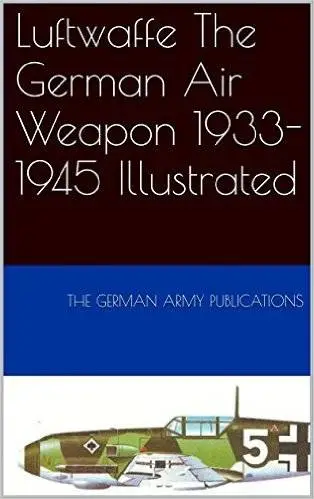Luftwaffe The German Air Weapon 1933-1945 Illustrated by The German Army Publications
English | March 28, 2016 | ASIN: B01DK0Q8ZW | 328 Pages | AZW3/MOBI/EPUB/PDF (conv) | 28.58 MB
English | March 28, 2016 | ASIN: B01DK0Q8ZW | 328 Pages | AZW3/MOBI/EPUB/PDF (conv) | 28.58 MB
On 6 June 1944, General Eisenhower was able to say, "If you see fighter aircraft over you, they will be ours." This remark signalized the achievement of the first objective of the Allied Air Forces In Europe: the reduction of the GAF as an effective deterrent to land or air invasion. This attainment of superiority over the GAF, given priority in the Casablanca Directive of January 1943, was the result of concentrated air action during the nine months prior to D-Day by the Allied Air Forces In the European Theater. It was brought about primarily through
a. Attrition of the enemy fighter force in the air and on the ground, and the consequent deterioration of the quality of enemy fighter pilots;
b. Attacks on enemy aircraft production which caused vital delay in the expansion of the GAF fighter force. The air superiority gained before D-Day was maintained throughout 1944 and 1945 by the combined efforts of the RAF and USAAF through attrition and
c. Destruction of the sources of enemy aircraft fuel production
d. Disruption of the GAF system for supply and repair caused by attacks on the German transportation system.
Attrition of the Enemy Fighter Force
1. The GAF fighter army was a major obstacle opposing the Allied strategic air offensive. Its history is marked with periods of temporary successes which were turned to eventual defeat by the effective measures of the Allies. When the full onslaught of the Allied offensive was felt, the GAF could not mount a defense in the strength for which it planned and worked so desperately. This was partly due to faulty decisions in the early years of the war which contributed to the deterioration of the GAF when faced with a major opponent. It was primarily due to the aggressiveness of the Eighth and Fifteenth AFs in the. air battles fought during the attacks on German aircraft production. A review of the record of the years 1939 - 1944 brings this into focus. As a guide to this review, a chart is furnished (Figure 12) showing the comparative losses of the German fighter force over these years.
2. It will be noted that the tempo of the air war, expressed in losses of German single-engine fighters[1], increased moderately through 1942, spurted ahead in 1943, and sky-rocketed in 1944. It is apparent also that the war on the Eastern Front involved a fairly steady attrition of the German single-engine fighter force which was never so excessive as to become a source of alarm to the German High Command. Hi is Is revealed in German aircraft production plans for the years 1941 and 1942 (Figure 13) when fighter losses on the Eastern Front constituted a high percentage of the total German losses.



